One of the most history, folklore and adrenaline-filled events is back again on schedule. The Palio di Siena, which, as every year, takes place on July 2 and August 16. A moment of trepidation that has kept Siena citizens breathless for centuries and centuries past. Yet let’s go step by step: sit back and enjoy this fascinating tale…
«The Palio is not a farce or a choreography you can watch in utter indifference; it is much more. […] The Palio is the whole of Siena with its seamless civilization, with the imperishable nature of its noble passions»
Tommaso Landolfi, Italian writer, poet, translator and glottotheta
Siena: UNESCO World Heritage
Siena rises in the heart of the Tuscany, nestled between the valleys of the Arbia, Merse and Elsa rivers, the Chianti hills famous for the wine of the same name, the rolling hills of the Montagnola and the lunar landscape of the Crete Senesi. It is a medieval city, undoubtedly among Italy’s most picturesque and enchanting.
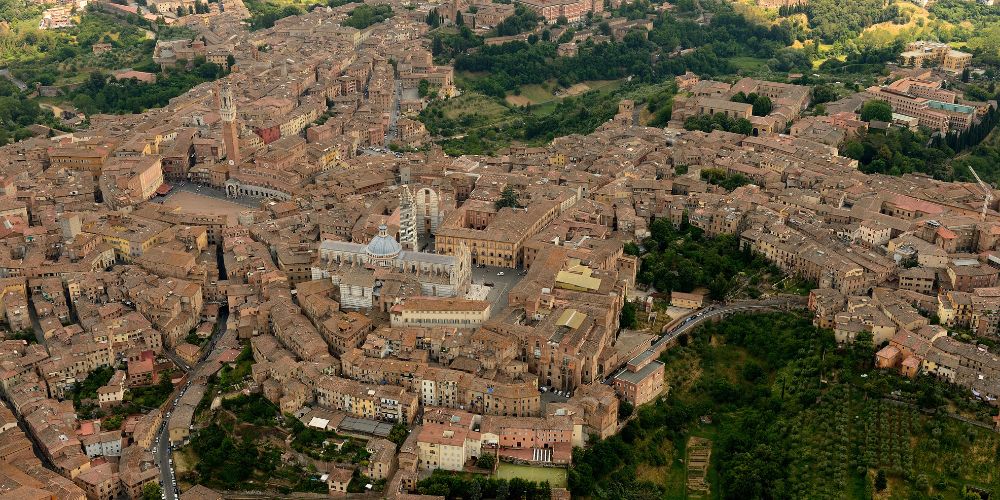
Evidence of this is the town walls, preserved almost intact, dating back to the 11th century. Its historical centre, clearly medieval, is one of the most remarkable in Italy. Not surprisingly, it was declared a UNESCO World Heritage Site in 1995 for having conserved its appearance and structure in an outstanding state of preservation. You can visit numerous noteworthy civil and religious buildings, monuments and sites of interest.
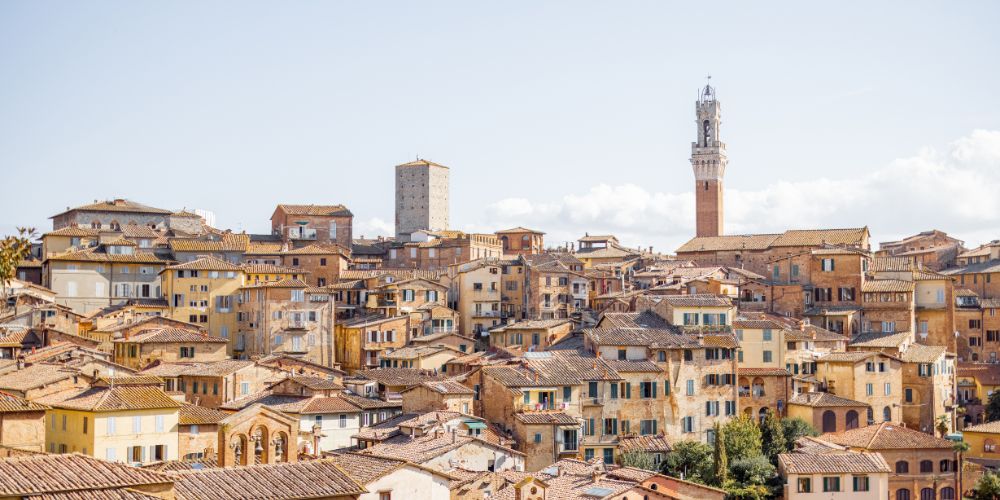
A city also known for panforte fruitcake, cantucci biscuits and Chianina meat, Siena is home to the oldest bank in the world, founded in 1472 and still operating today. After this brief yet necessary excursus, let’s not linger any longer… and get to the heart of a unique event.
The Palio di Siena and its origins
The most distinctive feature of the Palio is its longevity and its genuine character, deeply rooted in the history of Siena and its inhabitants. The first proof of the contrade (or districts) existence dates back to 1208, while it was not until the year 1281 that we hear of “Expenses for the Feast of Santa Maria d’Agosto“.
An unparalleled historical event
The event, a forerunner of today’s Palio, did not involve today’s “contrade“, which began to appear between the end of the 15th century and the first half of the 16th. Horse races were already an established custom in the city streets. However, the first Palio as we know it now, in the spectacular location of the renowned square, Piazza del Campo, was only recorded in 1633.
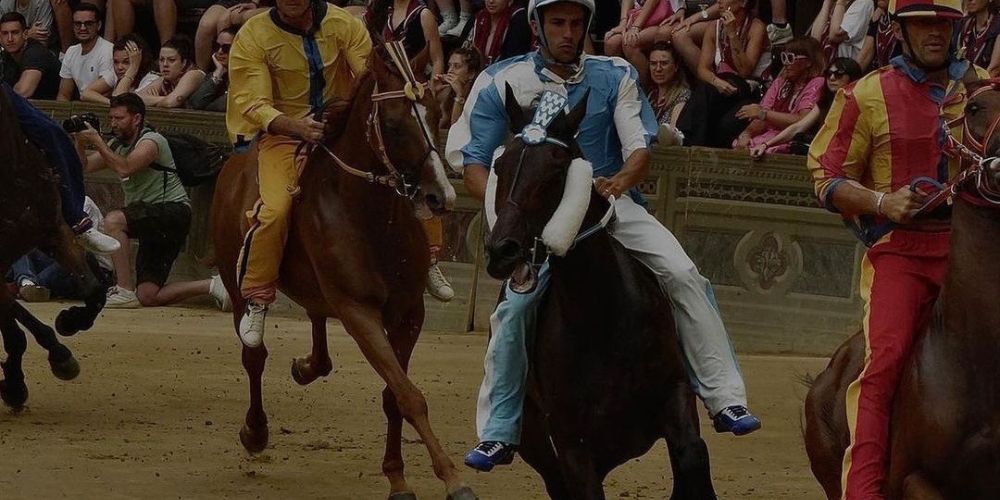
Since then, the event has only experienced interruptions for reasons of force majeure. In 1801, Napoleon’s presence in Italy, the insurrections of 1848, the Independence Wars of 1859 and 1866. In the 20th century, the World Wars (1915/1918 and 1940/1944) interrupted the event and, more recently, the pandemic in 2020 and 2021.
The Palio di Siena: Intangible Cultural Property of Global Importance
The Palio, nothing like a tourist and commercial phenomenon, is the most intimate and authentic expression of Siena and its people. It represents the soul, the profound essence of culture and folklore more alive than ever.
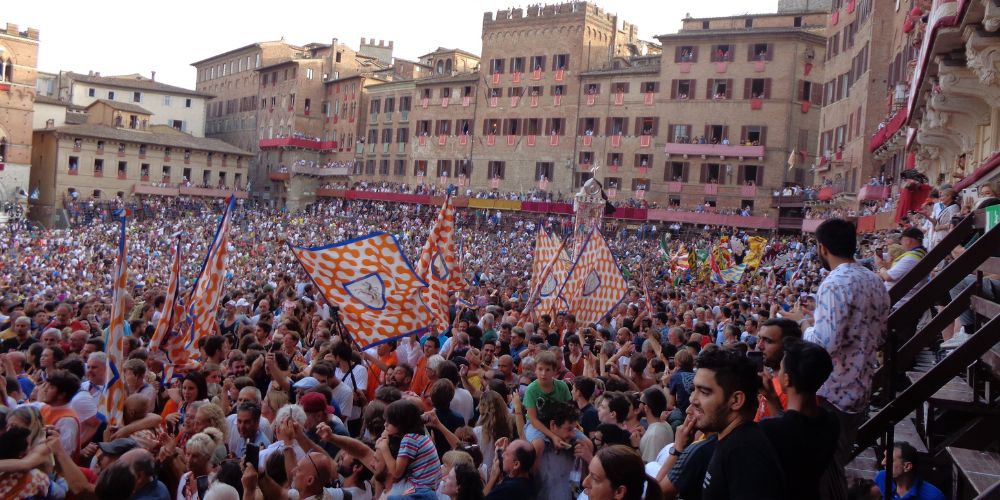
Recognised as an Intangible Cultural Asset by the Italian Ministry of Culture and Tourism, it is a treasure that protects and promotes the diversity of an extraordinary intangible heritage. Immaterial, yes, but capable of enflaming the souls of whoever experiences it: both locals and visitors from all over the world.
The Palio di Siena
It is held twice a year, on 2 July, in honour of the Madonna di Provenzano, and on 16 August, in honour of the Assumption of the Blessed Virgin Mary. The Palio consists of a race where horses are ridden without a saddle. It involves 10 historical contrade (or districts) competing for the “palio“, from the Latin pallium, i.e. precious fabric.
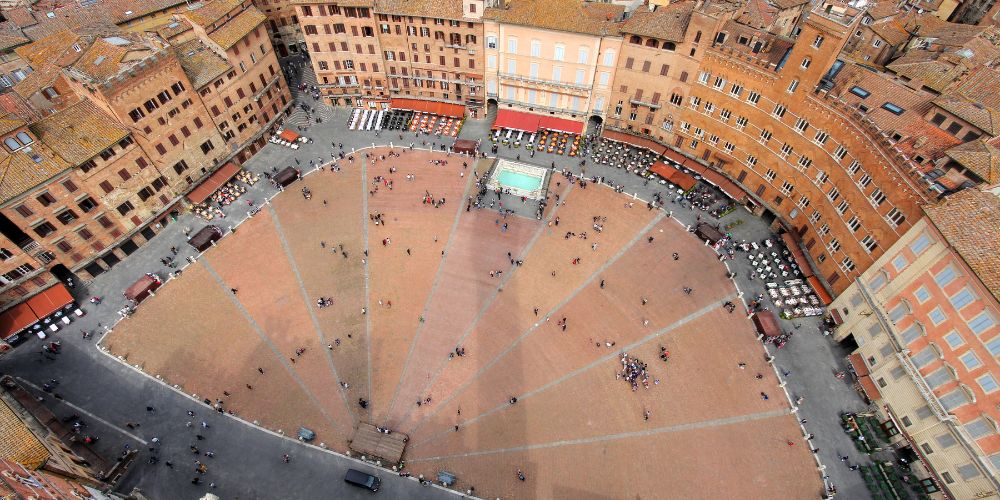
As of right, 10 Contrade compete: 7 that did not take part in the previous edition, while 3 are drawn by lot from the remaining ones to complete the line-up of competitors. The July and August races are independent so that the Contrade can participate in both, only one or, in the most unfortunate case, neither.
On 2 July 2023, the Aquila, Giraffa, Selva, Onda, Nicchio, Istrice, Drago, Torre and Chiocciola will challenge each other. The possible combinations between the 10 contrade, out of a total of 17, are 19,448. This means that the possibility of the same 10 competing together is very low.
The surreal atmosphere of the key moment of the Palio
Despite the thousands of people gathered in an overcrowded Piazza del Campo, an unbelievable silence hovers in the air. Everyone is waiting for the entry order that the Mossiere reads (in other words, a figure similar to a starter). Once he has pronounced the name of the tenth and last contrada, it will enter a run-up. This action will mark the exact start timing and the canapi’s lowering, or rather, the ropes delimiting the starting area of this singular horse race.
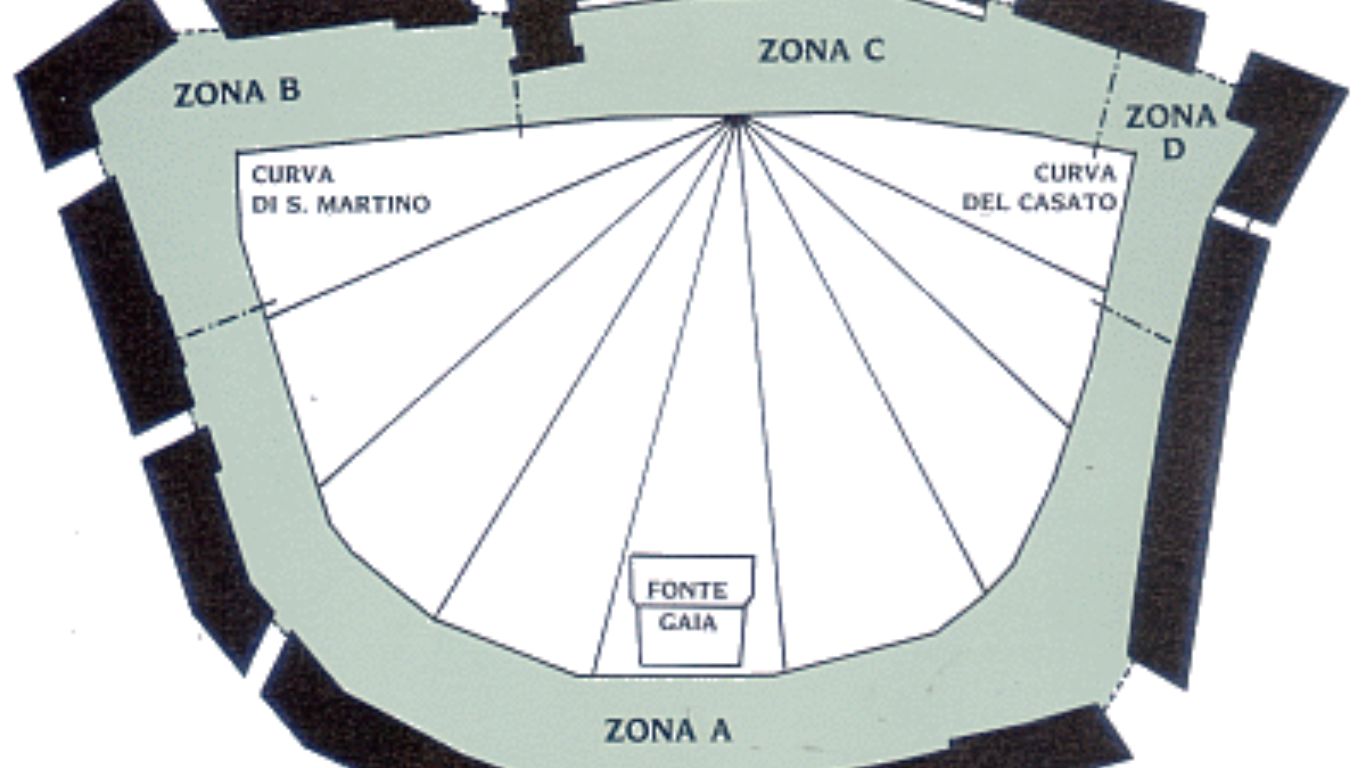
The bursting of a firecracker indicates a false move (or start), which will force the jockeys to stop their running horses, return behind the ropes and repeat the entry again.
Otherwise, if everything is regular, the race begins, and the horses will make 3 laps of the square, a circuit covering approximately 1 km.
The race winner
The winner is the first horse to finish the race, even if “shaken“, i.e. without a jockey, who has fallen in the meantime.
The glory is reserved for no one else, amid the shouts and jubilation of the contrada members who receive the “cencio” (or “the rag“, how the Sienes people call the palio), also known as Drappellone (namely, banner). The jockey and horse head for the Basilica di Provenzano (for the July Palio) or the Cathedral (for the August Palio) as a sign of devotion to the Virgin Mary. The moment of the hymn Maria Mater is solemn, in a blaze of colours, banners, rolls of drums and the whole contrada in celebration.
The 17 opposing Contrade
Initially, there were as many as 40 districts, later reduced to 17 following the outbreak of the plague in 1348.
Siena has 3 sections called Terzi (namely, thirds) called Città, San Martino and Camollia, inside city walls. This is the oldest division ascertained by historians and coincides with the borders sanctioned in 1729 by the Proclamation of Siena’s Governor at the time, Beatrice Violante di Baviera. The Terzi, in their turn, are divided into contrade or districts.
The Terzi and their corresponding Contrade
The Terzo named Città, the original city core, includes: the Nobile Contrada dell’Aquila (Eagle), Contrada della Chiocciola (Snail), Contrada Capitana dell’Onda (Wave), Contrada della Pantera (Panther), Contrada della Selva (Forest), Contrada della Tartuca (Tortoise).
Camollia, the northernmost portion of Siena, is home to the Nobile Contrada del Bruco (Caterpillar), Contrada del Drago (Dragon), Imperiale Contrada della Giraffa (Giraffe), Contrada Sovrana dell’Istrice (Crested Porcupine), Contrada della Lupa (She-Wolf), Nobile Contrada dell’Oca (Goose).

Finally, San Martino nucleus grew up around the Sienese route of the Via Francigena. It comprises the Contrada Priora della Civetta (Little Owl), Contrada del Leocorno (Unicorn), Contrada del Nicchio (Seashell), Contrada della Torre (Tower), Contrada di Valdimontone (Valley of the Ram).
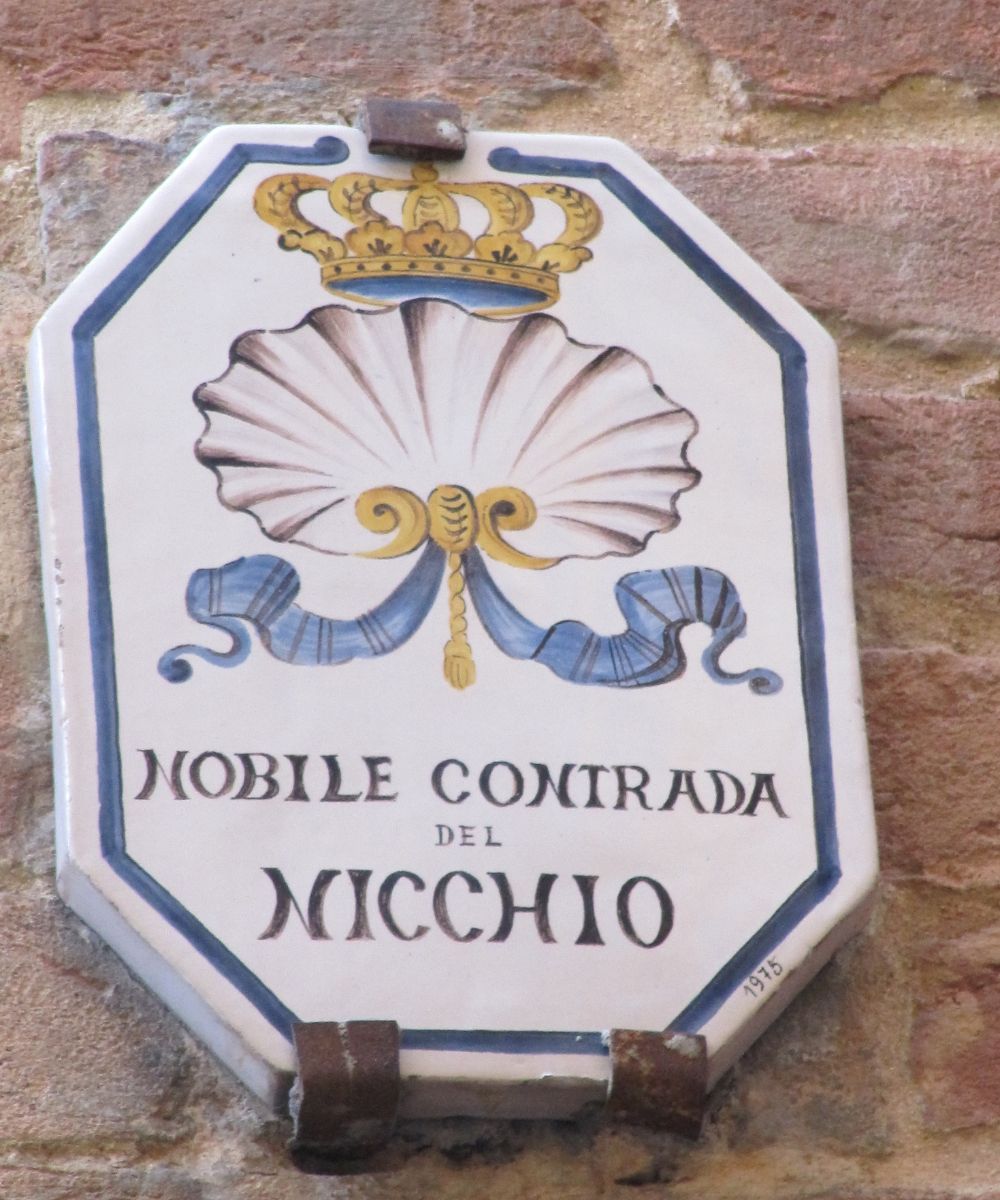
The inner meaning of Contrada
Each district, with its traditional colours and coats of arms, had a military role in protecting the city. Over the centuries, this defensive connotation was lost, and nowadays, they are authentic forges of tradition and folklore.
Like a small state, a Prior leads each contrada, representing a Governing Seat. In addition, there is a church and a seat where the artistic and cultural heritage gathered over the years is jealously kept. The palios they won, ancient and modern costumes, old banners, and historical documentary archives. In other terms, this is the contrada’s DNA from a historical, social and anthropological point of view.
Piazza del Campo: the event’s enchanting setting
It is the picturesque scenery where this historical tradition takes place. Besides being the main town square, it has a unique and distinctive feature: its shape. A shell-shaped hemicycle, Piazza del Campo has a southern slope and is paved with pietra serena stone (or sandstone) divided into 9 portions surrounded by white bands.

Its perimeter (about 333 metres) is surrounded by an almost uninterrupted line, even chromatically, of buildings, including the Torre del Mangia, the Cappella di Piazza, the Fonte Gaia and several noble palaces. Finally, we can appreciate the City Hall, which is nearly the completion and emblem of the event and the city itself.
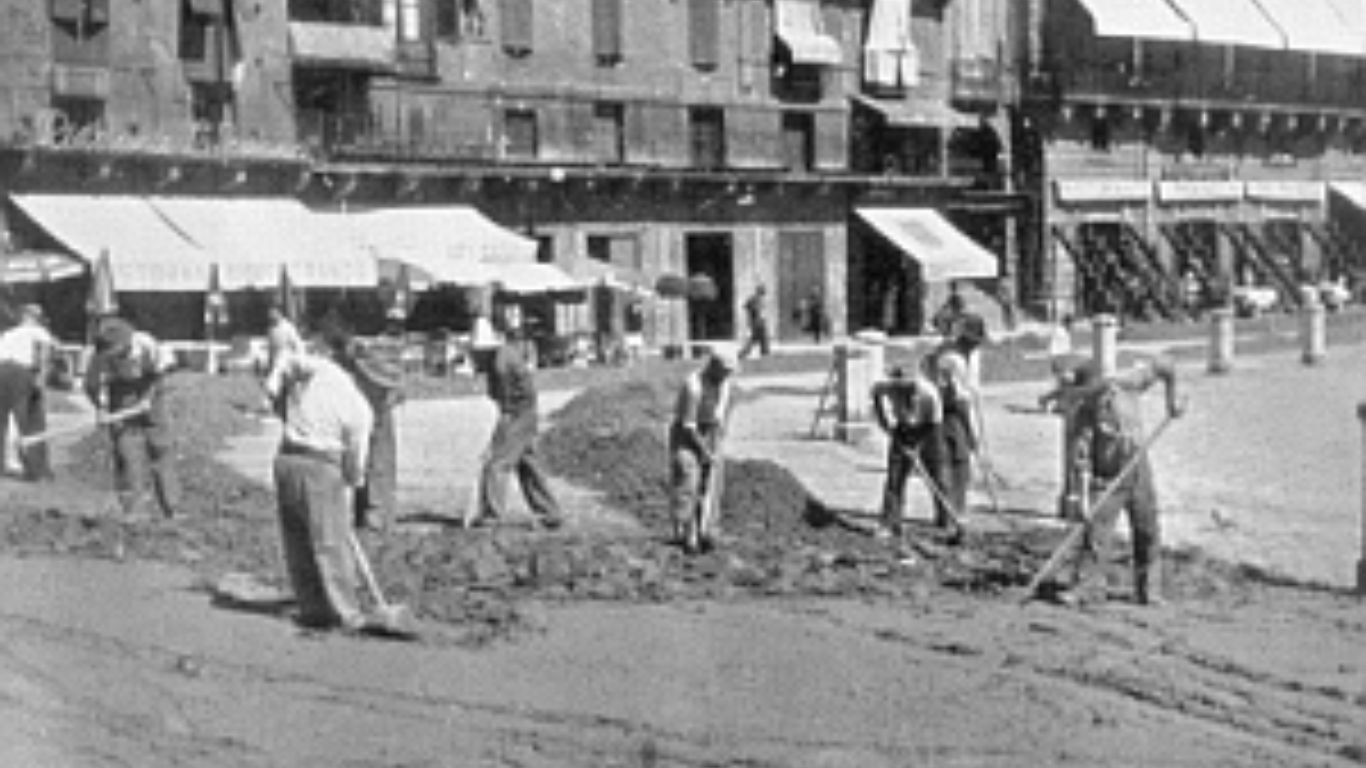
For the occasion, it is fenced off and filled with a layer of tuff dust mixed with sand, on average about 15 cm thick. Conventionally, Piazza del Campo is neutral ground: it does not belong to any of the 17 contrade. Until 1270, the square, which today hosts the Palio, was once used as a space for fairs and markets.
Attending the Palio di Siena
You can attend both the Palio and the rehearsals during the three previous days in the scenic Piazza del Campo free of charge. However, you are allowed to enter until the gates close.
On the other hand, if you wish to enjoy the show away from the crowds, you can do so from the boxes around the square or the windows or balconies of the buildings overlooking it. Although there is a charge, there is no ticket office, so you must resort to the so-called palcaioli (the box managers) or the lucky owners of the buildings overlooking the beating heart of Siena.
If you are not in Siena, you can follow the Palio on the Italian La7 channel live from 5.30 p.m. on 2 July or in streaming on Canale 3.
Curiosities about the Palio you probably don’t know
The status of Contradaiolo
The status of Contradaiolo (member of a contrada) is obtained exclusively by birth. Likewise, it is granted to anyone from a family native to that contrada. It is said, in fact, that in Siena, children are baptised twice: the first time in church, the second in the contrada.
The Palio of Provenzano and the Miracle of the Virgin Mary
The Palio di Siena is also known as the Palio di Provenzano. Do you know why? According to some manuscripts of the time, it seems that on 2 July 1594, a Spanish soldier in the service of De’ Medici shot at the small bust of the Madonna kept in the Basilica of Santa Maria in Provenzano.
Stunned by the effects of alcohol fumes, out of contempt for the Virgin or who knows for what other reason, a shot went off from his blunderbuss and hit the image, creating a crack. At the same time, however, the soldier died from the lethal explosion of the weapon. The episode was considered a sign of Mary’s protection of Siena and the Sienese people.
The Historical Parade
Since the origins of the Sienese festivals, the choreographic and evocative parade precedes the actual Palio. This spectacular display in period costumes evokes and celebrates the glory of the ancient Republic of Siena.
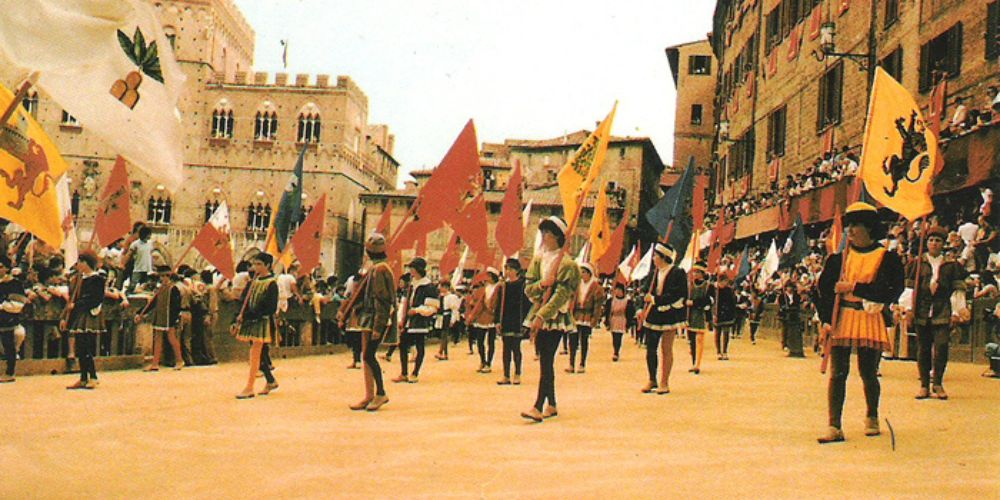
A line-up of 14 groups, totalling some 700 participants, parade through the Piazza del Campo before the horserace competition. This is another exciting moment amidst the blasts of trumpets and rolls of drums in a sea of waving banners. Don’t miss it!
For further information and insights, we recommend visiting the official reference pages: il Consorzio per la Tutela del Palio di Siena e il Palio.org authorised by the Consorzio del Palio.


